|
25th June 2017:
White Sands and Barns Ness
The weather was to be sunnier in the east so we made for Whitesands and
Barns Ness. Again the usual social media birding sources were very quiet so it was
up to us to find something interesting. (Last week's female Garganey stirred up
Twitter a wee bit.)
Fed and watered at Morrisons, we arrived at a blowy Whitesands to find the
shoreline rather devoid of birds apart from a few female Eider with their chicks.
We were drawn though to the local flora. Sea Sandwort was in fruit. At the edge
of Dunbar golf course (technically, in the rough!) we spotted a lovely patch of
Wild Thyme which I photographed after the golfers had passed through. On a bush
in the dunes a male Reed Bunting sang its heart out as I snapped an image of
some Lady’s Bedstraw.
Female Eider
|
Sea Sandwort
|
Reed Bunting
|
Lady's Bedstraw
|
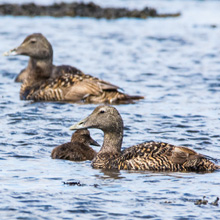
|

|

|

|
A beautiful patch of Common Restharrow also bordered the dunes, with some Hop
Trefoil and Yarrow. It was decided to move on to the Barns Ness car park where
we immediately spied a very bonny clump of Viper’s Bugloss. The close up shot
shows that it's a stunning flower (see Pictures of the day below).
Common Restharrow
|
Common Hop-Trefoil
|
Yarrow
|
Viper's Bugloss
|

|

|

|

|
We walked around the shoreline as the tide crept in. I took a picture of
some nicely exposed Silverweed showing its deep red rhizomes and vivid yellow
flowers, often confused with buttercups. We spotted a chirping Rock Pipit and
at a series of rock pools a pair of Shelduck fed tentatively as we slowly
passed by. Offshore a family of Cormorants were using a rock as a base between
bouts of fishing.
Silverweed
|
Rock Pipit
|
Shelduck
|
Cormorant
|

|

|

|

|
Again it was very quiet on the beach – perhaps the high wind kept the birds
away, or maybe they were sheltering further out, or perhaps it was the Sunday
walkers. Anyway, we next headed for a wooded area sheltered from the windy
gusts. On our way there I came across a Cinnabar moth caterpillar feeding on
Common Ragwort. John then took a photo of a Reed Bunting as I photographed a
patch of tiny white Fairy Flax. A Stonechat appeared briefly, precariously
perched on a distant wind-buffeted bush. It was so windy I had to rest my camera
lens on John’s shoulder to get a steady shot.
Cinnabar Caterpillar
|
Reed Bunting
|
Fairy Flax
|
Stonechat
|

|

|

|

|
In the relative calm near the trees John saw a few 7-spotted Ladybirds on
some burned out bushes. Then, flitting between stalks of grass he pointed out a
Common Plume Moth which seemed almost Stick-insect-like. I crept up to capture
an image on my macro camera of a Red Admiral butterfly perching on a conifer,
but higher on the tree a Painted Lady butterfly needed my 600mm lens to get a
decent shot.
7 Spot Ladybird
|
Common Plume Moth
|
Red Admiral Butterfly
|
Painted Lady Butterfly
|

|
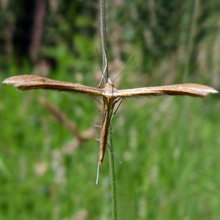
|

|

|
We returned to the car for a wee cup of tea with pastry lattice. It had been
a great day for flowers and insects but rather disappointing for birds. But
that's how it goes. Pictures of the day were the Viper’s Bugloss and the Common
Plume Moth.
Pictures of the week:
Viper's Bugloss
|
Common Plume Moth
|
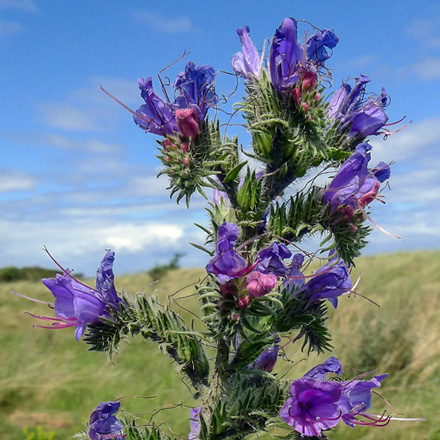
|
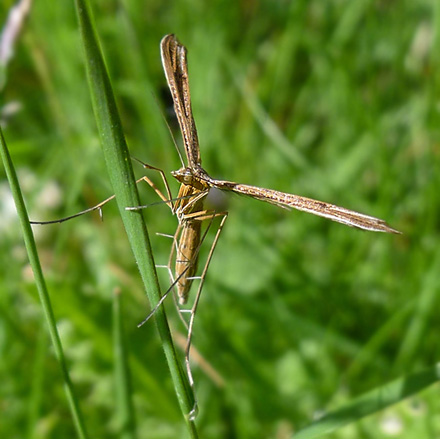 |
18th June 2017
Skateraw, Belhaven Bay
The weatherman was promising
sunshine across Central Scotland with the best in the east so after our
usual breakfast we headed for Skateraw, the sandy cove adjacent to
Torness Power Station in East Lothian. On arriving there we were met by
a lonely Carrion Crow on a high wall above the old lime kiln. Soon I
was engaged in a battle of wits with an excited Common Whitethroat as I
manoeuvred myself into a position with the light behind me. Once I got
a couple of shots I moved on as I didn't want to upset him too much as
he obviously didn't want me about. Above the lime kiln I noticed
patches of Restharrow and John pointed out some Germander Speedwell.
Carrion Crow
|
Common Whitethroat
|
Restharrow
|
Germander Speedwell
|

|

|

|

|
We decided to move to the rocky
area at the west end of the bay where we saw bird activity. On the way
there we noticed Red Poppy and Common Toadflax. We were watched by a
courting Reed Bunting as we trudged through the long grass before
approaching the shore very tentatively trying to avoid putting up any
birds that could have been there. Sure enough, swimming in the rock
pools was a family of Shelduck with no less than 11 young. We watched
as they slowly made their way across the rocks and into the Bay.
Red Poppy
|
Common Toadflax
|
Reed Bunting
|
Shelduck
|

|
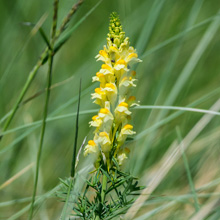
|

|

|
In the grasses around a small monument to a Youth leader I took some
pictures of several moths - Cinnabar caterpillars, Barred Straw and a micro
moth, Chrysoteuchia Culmella. I also found two types of the wildflower Campion,
White Campion and Bladder Campion (see Pictures of the Day below).
Cinnabar Moth Caterpillar
|
Barred Straw Moth
|
Chrysoteuchia Culmella |
White Campion
|

|

|

|

|
A Curlew passed overhead as it
searched for a good spot on the shore, followed by a Grey Heron which
had been disturbed by paddlers. On our return journey we were followed
by a female Linnet, no doubt watching that we avoided her nest. At the
bungalow by the beach a lonely Swallow rested on telephone wire.
Curlew
|
Grey Heron
|
Linnet
|
Barn Swallow
|

|

|

|

|
The wildflowers around the house
made a very attractive sight. There were large patches of Red Valerian
and Catmint with smaller patches of Weld and Teasel.
Red Valerian
|
Catmint
|
Weld
|
Teasel
|

|

|

|

|
We moved back west to Belhaven Bay to check out Seafield Pond. There we came
upon a family of Mute Swans with half a dozen cygnets. As they moved off the
sandy area we noticed an odd-looking bird that was probably a female Garganey.
The jury is still out – some say it is a hybrid, others a female Mallard.
Nearby, a baby Coot constantly pestered its parent for food.
As we watched these birds a large fish swam on the surface close to the pond
edge. Eventually we noticed a further two fish stationary beneath the surface.
Just what they were up to, we just don't know.
Mute Swan
|
Female Garganey
|
Coot
|
Unidentified Fish
|

|
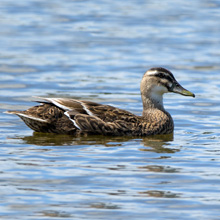
|

|
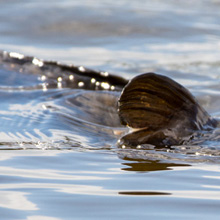
|
We returned back to the car for a
spot of tea and lattice pastry where we reflected on a very enjoyable
and varied day and discussed the pictures of the day. I chose the
Bladder Campion and Common Whitethroat. We had such a good time we got
home a half an hour late – a fact not missed by our wives!
Pictures of the week:
Bladder Campion
|
Common Whitethroat
|
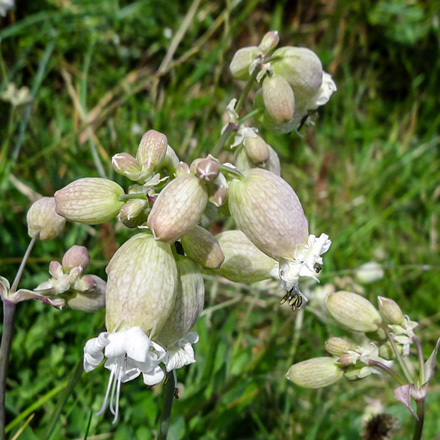
|

|
11th June 2017
Musselburgh , Port Seton
There was light cloud across the
Central Belt of Scotland, with the odd chink of blue that gave us hope
that we'd get some sunny spells. We headed for Musselburgh although we
had no word of any special sightings – we just like Musselburgh.
At the Scrapes we were disappointed to see it looked overfilled with
water which probably explained the absence of waders. Three Gadwall
flew in and immediately stirred one of the several Shelduck into
action. It flew over to the visitors encouraging them to move on.
Meanwhile, a Black-headed Gull went about it's business. We decided to
move to the seawall and hope for more action there. A Reed Bunting
whistled plaintively on the fence as we left the Scrapes.
Gadwall
|
Shelduck
|
Black Headed Gull
|
Reed Bunting
|

|

|
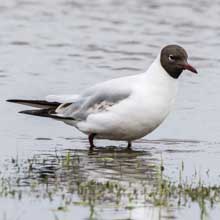
|

|
All we saw at the seawall was a couple
of Linnets before a shower of rain
forced us back to the car. We then drove round to the mouth of the Esk
where we
found large numbers of Goosander in the water and lazing about the
shore. Some
were immature but were diving as keenly as the adults. A few Eider were
also in
the water with their young.
Linnet
|
Goos
|
ander
|
Female Eider
|
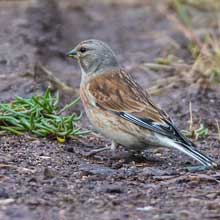
|

|
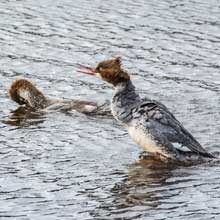
|

|
A
flock of around 20 Canada Geese glided past us, carelessly scattering
any smaller birds in their path. Eider and Mallards in eclipse plumage
sat preening on th shore until a passing fisherman disturbed their
peace.
Canada Geese
|
Eider
|
Juveniles
|
Male Mallard Eclipse
Plumage
|
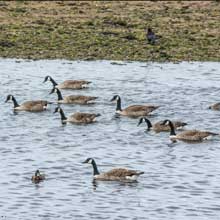
|
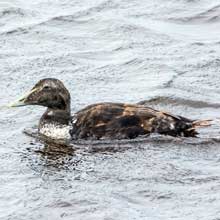
|

|
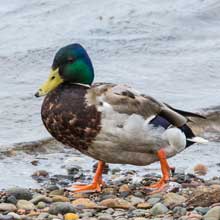
|
On the seawall, a tiny 10 spot Ladybird
sheltered from the strengthening
breeze. At this point the rain was moving in again so we decided to
drive along
to Port Seton Harbour. As we made our way back to the car a bold Curlew
flew
low overhead, probably heading for the Scrapes. A male Eider toddled
past us as
I captured an image of some Common Mallow at the pathside.
11 spot Ladybird
|
Curlew
|
Eider
|
Common Mallow
|
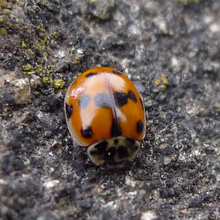
|
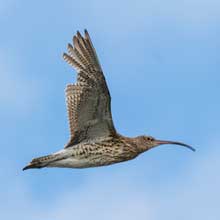
|

|

|
At Port
Seton we walked around the harbour attracted by the croaking of
Sandwich Tern fishing offshore. Eventually one passed close enough for
a decent
shot. A Cormorant then flew in just as half a dozen Canada Geese flew
past.
Sandwich
|
Tern
|
Cormorant
|
Canada Geese
|

|

|

|
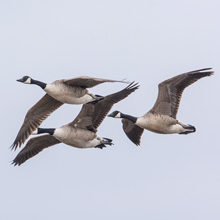
|
It had been a bit disappointing with
only the ”usual suspects” gracing us
with their presence. However, as described, there were a few points of
interest. Our shots of the day were of the Port Seton Cormorant landing
on the
sea and the juvenile Goosander.
Cormorant
|
Juvenile Goosander
|

|

|
As a bit of consolation, we each downed a couple of
Chocolate Eclairs with
our customary cuppa. Well, any excuse will do for a wee bit of
confectionery!
4th June 2017
Barns Ness, Musselburgh
After
we consumed breakfasts in Dalkeith Morrisons
(9.5/10 – leaky teapot),
the weather app on my phone lead me to expect fair weather further to
the east
so we headed for Barns Ness. However there were frequent light showers
from
when we arrived there and the light was poor. At the Cement Woks there
were large flocks of Greylags and Canada Geese and a few squabbling
Shelducks.
Greylag
Geese
|
Canada
|
Geese
|
Shelduck
|

|

|

|

|
As I drove past the Whitesands car park a very obliging
Swallow posed as
John snapped a few shots from the passenger seat. A bit further along I
managed
to snap a Sand Martin from my side and also a Skylark in the grassy
bank. We
parked the car at the Barns Ness car park and headed for the Lighthouse
and as
we reached the seashore John spotted a Grey Heron fishing in the
rockpools.
| Barn
Swallow
|
Sand Martin
|
Skylark
|
Grey Heron
|

|

|

|

|
Just as we were getting into our stride the rain came on
– not good for
expensive camera equipment! We headed back to the car, sneaking shots
of Meadow
Pipits and Linnet on the way. As we sheltered in the car we watched a
pair of
Goldfinches feeding in the long grass.
Meadow
|
Pipit
|
Linnet
|
Goldfinch
|
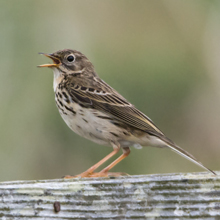
|
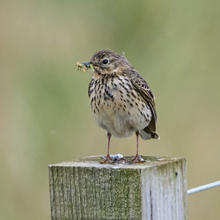
|

|

|
After consulting my naughty weather app it was apparent
that Musselburgh was
enjoying dry weather so we decided to cut our losses and head there.
Again as
we passed Whitesands John captured some nice shots from the passenger
seat of a
Reed Bunting and a Swallow. We drove via Port Seton where we saw a huge
flock
of Eider travelling east. At the sea wall by the mouth of the Esk,
Musselburgh,
we finally got to stretch our legs as the many small groups of the
ubiquitous,
noisy Oystercatchers were coming and going with their usual haste.
Reed
Bunting
|
Barn
Swallow
|
Eider
|
Oystercatcher
|

|

|

|

|
We startled a pair of Wood Pigeon as we leaned over a
fence to get pictures
of a family of Eider resting on the water's edge. They soon spotted us
and made
off for a safer place.
Wood
Pigeon
|
Hatchling Eider
|
Female Eider
|
Male Eider
|

|

|

|

|
As the light worsened, it was apparent that the rain was
not far away,
however I managed some shots of a few more birds. I caught a juvenile
Pied
Wagtail as it flitted on the shore just as a small flock of Goosanders
flew in.
They looked like females, but some may have been juveniles. A female
Eider flew
past towards the family we'd just viewed. My final shot was of a
Carrion Crow
smashing shellfish by dropping them onto the rocks.
Juvenile
Pied Wagtail
|
Goosander
|
Female
Eider
|
Carrion
Crow
|

|

|

|
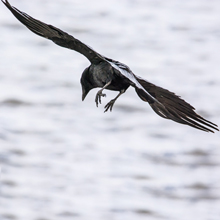
|
Considering the weather we were fairly happy with our
haul of pictures. We
managed to down our tea and lattice buns sitting by the car reflecting
on
another enjoyable trip. My pictures of the day are of the Reed Bunting
(taken by
John) and an Eider chick.
Pictures of the week
Reed Bunting
|
Eider Chick
|

|

|
Back To
Top
|

